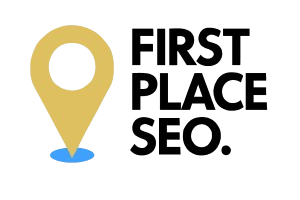Small Businesses at a Crossroads: Why User Experience Must Lead Your Website Design Strategy
No matter what town or city your from, if you are a small business owner you need to have a modern website or risk falling behind. In a world where user experience (UX) can make or break a business, ignoring user experience could cost you dearly.
As small businesses face the challenge of establishing a strong online presence against bigger brands with bigger wallets, one aspect stands out one where they can compete: User Experience (UX). This is not just a buzzword used by web designers and marketers; it’s a central part of how your customers interact with and perceive your brand. A well-thought-out website focused on UX could be the deciding factor between thriving and fading into obscurity.
The Importance of UX on Your Website’s Performance
For many small businesses, a website is more than just an online portfolio, it is a connection point with their potential customers. Many businesses risk pushing these customers away because of outdated or poorly constructed websites that don’t consider the principles of User Experience.
When a visitor lands on a webpage, they form an opinion almost instantly. If the site is unappealing, hard to use, or slow to load, those visitors are likely to leave, taking their potential business elsewhere. This isn’t a minor issue; it’s a serious concern that can directly affect your revenue. A website with poor UX won’t engage visitors effectively, leading to lower conversion rates and wasted resources.
Why Ignoring UX Could Be Costly
Some small business owners might think that User Experience is a concern for larger companies with bigger budgets. The truth is, UX is just as important, if not more so for smaller enterprises that can’t afford to lose customers due to easily avoidable website issues. Failing to prioritise UX could leave your business struggling as competitors embrace a more user-friendly approach.
With higher and higher expectations, businesses that don’t deliver a fluid online experience will find it challenging to keep up. Customers will not hesitate to move on to a competitor if their experience is subpar.
Key Elements That Define UX in Website Design
1. Visual Design: More Than Just Looks
Visual design isn’t just about making a website look nice; it’s about creating an experience that reflects your brand and meets customer expectations. For small businesses, a site that fails to deliver visually can damage trust and credibility. Elements such as colour schemes, typography, and images all need to work together to create an appealing and inviting experience.
Poor visual choices can drive potential customers away before they even start exploring what your business offers. For instance, outdated graphics or cluttered layouts can create doubt about your business’s professionalism and reliability.
2. Navigation: Guiding Users with Ease
Clear and intuitive navigation is key to a positive user experience. If visitors struggle to find what they’re looking for, they are unlikely to stay long. Effective navigation is more than just having a menu at the top of your page—it involves thoughtful organisation, clear menu structures, and strategic internal links that make the user’s journey simple and enjoyable.
A website that’s difficult to navigate is a common reason for high bounce rates. Users don’t have the time or patience to dig through a poorly organised site, and if they can’t find what they need quickly, they’ll simply leave.
3. Page Load Time: Every Second Matters
Page load time is crucial. If your website takes more than a few seconds to load, you’re likely losing visitors. This isn’t just a technical issue—it’s a major factor in how users perceive your site, and it affects your visibility on search engines. Google penalises slow sites, which means a slow-loading website can hurt your rankings and reduce your chances of being found by potential customers.
Ignoring page load time can have serious consequences. Visitors expect quick access to content, and even a short delay can drive them away. Optimising your load times by compressing images, minimising code, and choosing a reliable hosting service is essential for keeping users engaged.
4. Mobile Friendliness: Reaching Users Wherever They Are
With a significant portion of web traffic coming from mobile devices, ensuring your website is mobile-friendly is essential. A site that doesn’t adapt to different screen sizes not only frustrates users but also risks losing a large number of potential customers.
Responsive design ensures your site works well on any device, whether it’s a smartphone, tablet, or desktop. A poor mobile experience can lead to missed opportunities and lower search engine rankings, as search engines favour mobile-optimised sites.
5. Content Layout: Structure that Engages and Informs
Content layout is about more than just how text and images are arranged on a page—it’s about presenting information in a way that is easy to follow and engaging for users. A well-structured layout uses headings, subheadings, bullet points, and white space to break up content, making it easier for users to understand and navigate.
Cluttered or confusing layouts can overwhelm visitors, causing them to leave before they’ve even begun to explore what you offer. This leads to higher bounce rates and lost potential sales.
6. Accessibility: Ensuring Everyone Can Use Your Website
Web accessibility is about making sure your website can be used by everyone, including those with disabilities. This means implementing features like alt text for images, ensuring compatibility with screen readers, and enabling keyboard navigation.
Overlooking accessibility can exclude a significant portion of potential users who rely on assistive technologies. It can also lead to legal challenges and damage your brand’s reputation.
Steps to Improve Your Website’s UX
Improving User Experience on your website requires attention to detail and a commitment to ongoing refinement. Here are some steps you can take:
-
Refresh Your Visual Design: Focus on creating a clean, cohesive design that makes a strong impression. Ensure your colour scheme and typography are both appealing and easy to read.
-
Simplify Navigation: Keep your menu structure straightforward, and ensure users can find what they need with ease. Use internal links to guide them through your site, and make sure your navigation is consistent across all pages.
-
Optimise Load Times: Compress images, reduce unnecessary code, and invest in reliable hosting to ensure your site loads quickly. Regularly check your site’s performance and make improvements as needed.
-
Ensure Mobile Friendliness: Test your website on different devices to make sure it provides a consistent experience across all screen sizes. Implement responsive design practices that adapt your content without sacrificing usability.
-
Organise Your Content Layout: Use a logical structure that guides users through your content, making it easy for them to engage with your site. Avoid clutter and make good use of white space to create a clean, organised layout.
-
Prioritise Accessibility: Ensure your website is accessible to all users by following best practices. Implement features like alt text for images and ensure your site works well with screen readers and keyboard navigation.
The Future of Your Small Business Depends on UX
The importance of User Experience in website design cannot be overstated. Small businesses that fail to make UX a priority risk falling behind in an increasingly competitive market. By focusing on key elements like visual design, navigation, page load time, mobile friendliness, content layout, and accessibility, you can create a website that not only attracts visitors but also keeps them engaged and converts them into loyal customers.
In a time where expectations are higher than ever, delivering a smooth, user-centred experience is not just an option—it’s a necessity for the future success of your small business.

